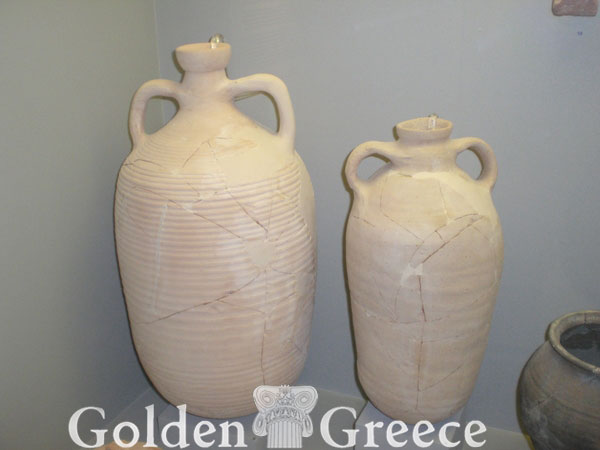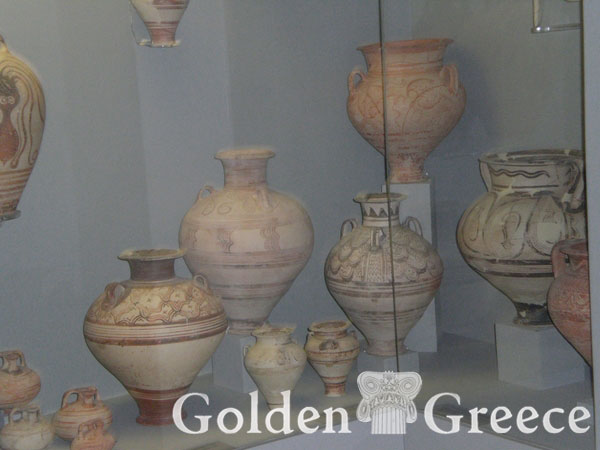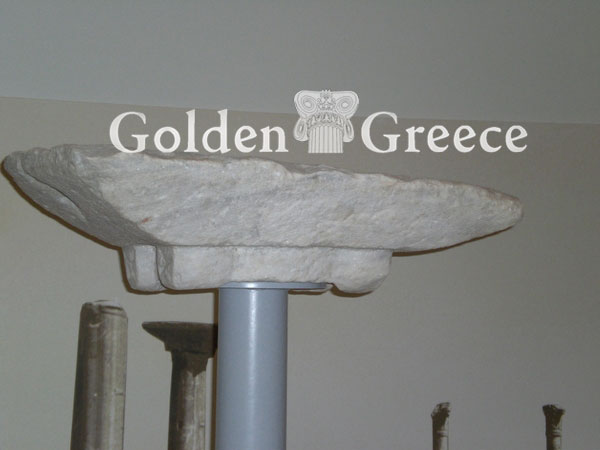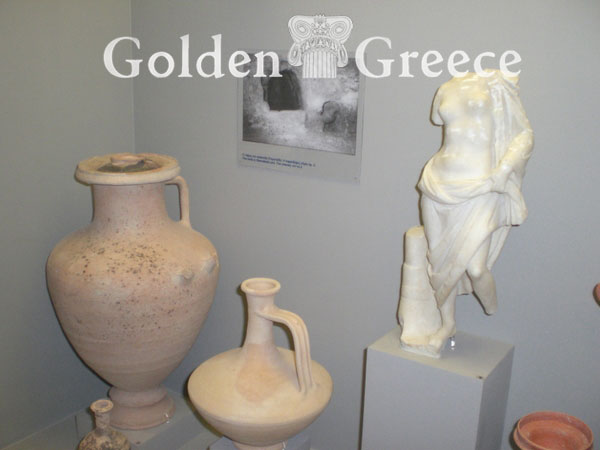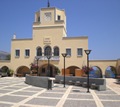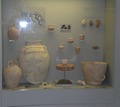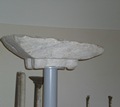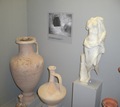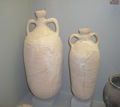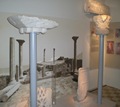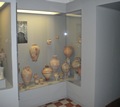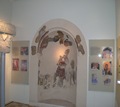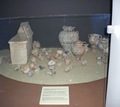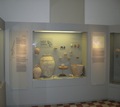
The Archaeological Museum of Karpathos is housed in the western wing of the Eparchiion, which is a building complex from the period of Italian rule.
In the first room, there is an introduction to the exhibition with the help of a chronological-historical diagram and a projection of slides with the monuments of the island. The prehistoric section includes a few Neolithic finds (obsidian blades, shells and a cast of a stone figurine of a female deity, now in the British Museum), finds from a Minoan farmhouse in southern Karpathos, finds from a recent excavation at the Minoan/Mycenaean settlement of Pigadia, in which three ceramic kilns, a burial ensemble from the necropolis of the settlement, as well as a representation of a tomb of the HY IIIA/IIIB era from the Archeological Museum's Vonies were discovered. On the occasion of the exhibits, the agricultural economy and life, commercial and cultural contacts, craft activity, daily life and burial customs and beliefs are commented on.
In the second section, of historical times, the exhibits are distributed geographically in the three ancient cities of the island, Karpathos (probably in today's Aperi), Arkesia and Vrykounda, and in Potidaion, today's Pigadia, a port and territorial annex during Hellenistic times of the city of Karpathos. The exhibits (mainly Hellenistic vases, parts of geometric vases and a classical burial ensemble from Aperi, a few sculptures from Pigadia, a model of the Roman reservoir at Ria tou Lefkos) are accompanied by texts referring to the history of the island, the topography of the ancient cities , as well as in important historical inscriptions of Karpathos.
The last section includes representative findings from the early Christian basilicas and settlements of Karpathos (pots, amphorae, coins, architectural members, projection of slides with mosaic floors), with the help of which the economic and artistic flourishing of the island during this period will be highlighted. Reference to Byzantine Karpathos is made with the display of the rare non-pictorial churches of Olympus (8th-9th c.) and with the exhibition, in an artificial alcove, of a fresco depicting Deisis from the 13th c. The picture is complemented by historical facts about the time when the island belonged to the Kornaris (14th-16th centuries), piracy, the topography of the island, as depicted in maps of travelers from the 15th and 16th centuries.
Source: ODYSSEUS
odysseus.culture.gr
